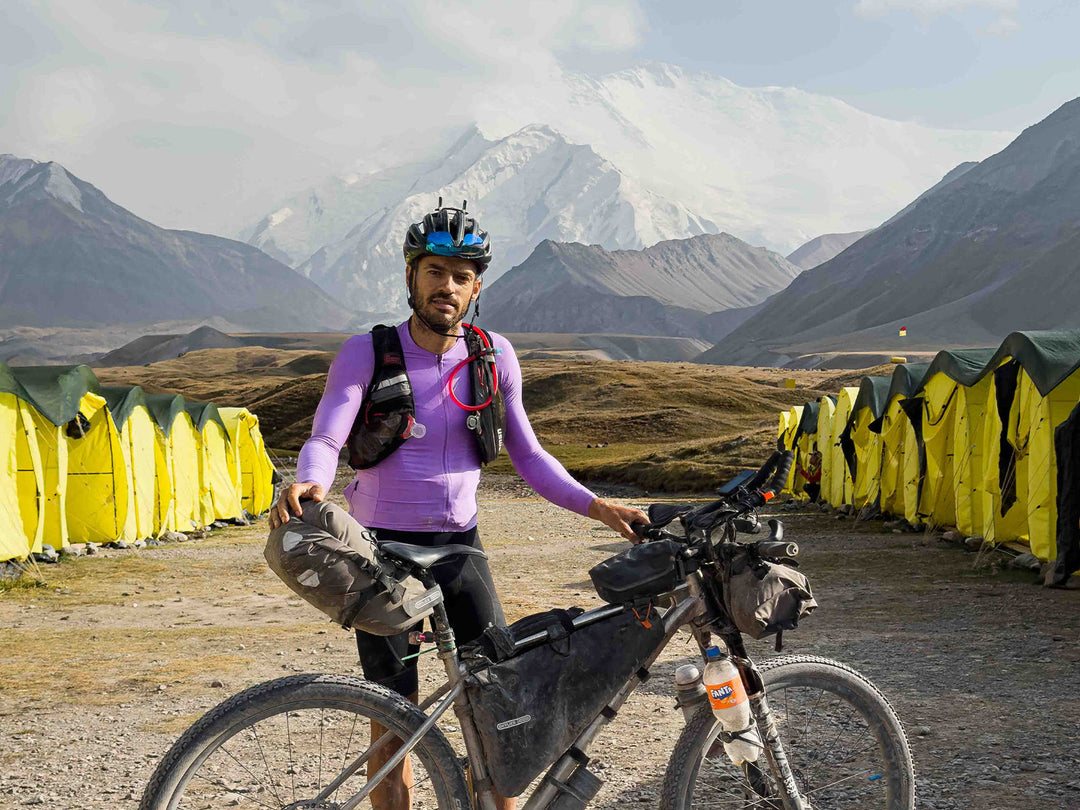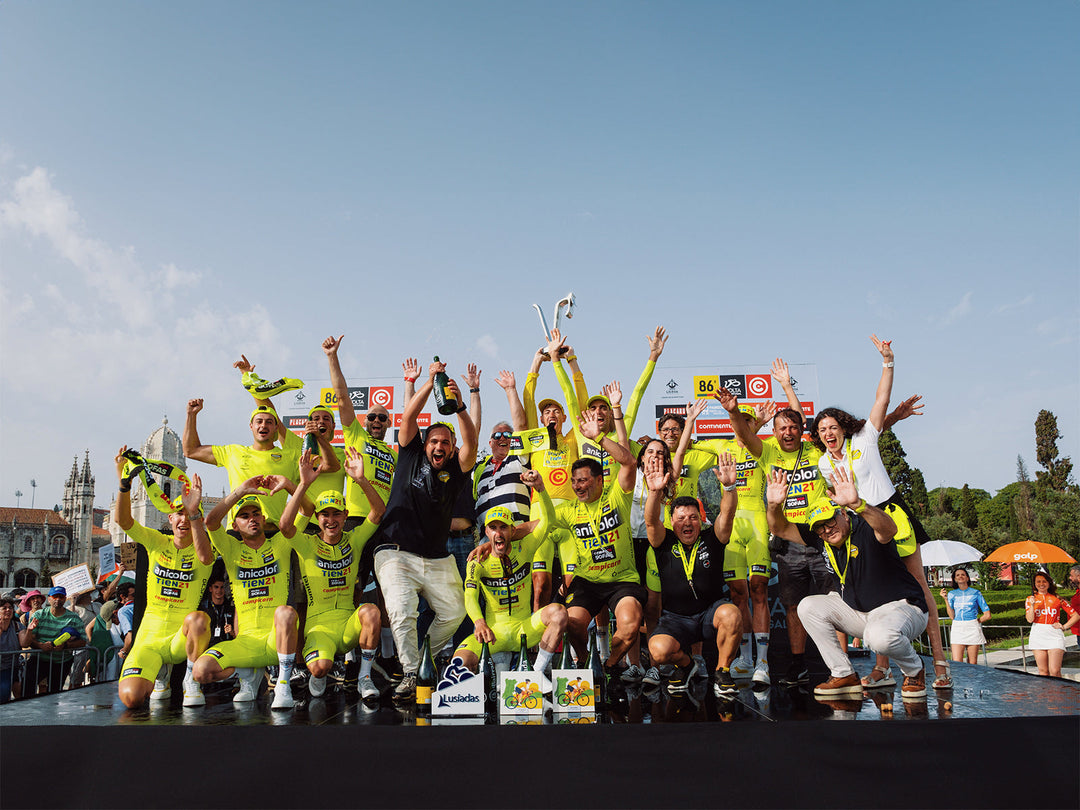TIPS FOR A GREAT CYCLING ROLLER TRAINING

In collaboration with CyclistGo Training.
Because of the exceptional situation we are experiencing, which has led to the restrictions on the practice of road cycling, indoor cycling has become the only alternative for continuing to enjoy this sport.
Perhaps, at a glance, it may seem that there is no difference between pedalling on the road and pedalling on a roller, although the cyclist testing these will certainly feel the difference.
Below, we outline some basic tips for enjoying indoor cycling safely:
SURROUNDINGS
Cool a room with a current of air and a good fan so that the airflow reaches you from the front, as you would feel it on a road. Temperature and humidity.
If you decide to practice outdoors, avoid exposure to direct sunlight by choosing a place that’s in the shade. Your body’s ability to cool down will always be much less than on the road, even with good ventilation.
HYDRATION
Dehydration will be greater indoors than outdoors due to being less able to release heat from your body, so the recommended requirements for hydration will also be greater. As a general rule, choose isotonic drinks at roughly 500ml per hour, although of course, this recommendation will depend on performance levels, on the surroundings and the intensity at which you exercise.
If you want a clearer view of your hydration strategy, we recommend you use the CyclistGo Training calculator.
NUTRITION
Just as with road cycling, the consumption of carbohydrates for indoor cycling is indicated by the duration, intensity and objective of the session. The basic recommendation for sessions in which you want maximum performance will be:
- Up to 45 min → No support is required.
- From 45 mins to 75 mins→ Simply rinse your mouth with a drink containing carbohydrates.
- Between 1hr and 2hrs → Around 30g per hour.
- Between 2hrs and 3hrs → 60g per hour.
- Over 2.5hrs → Between 60 and 90g per hour.
PEDALLING
Below, we explain the distinctive features of pedalling on a roller and what you can do to correct these:

- Lower inertial load → Some rollers with larger inertia steering wheels are able to increase this low inertial load.
- Limiting side-to-side sway → The Kinetic Rock and Roll model allows for side-to-side sway. If you are someone who likes to pedal standing up you will certainly appreciate this.
- Absence of slope → There is a device which has been developed by Wahoo Fitness that can simulate inclines and automatically raise the front part of the bike.
- More time for an effective workout → There are no bends, downhills or obstacles on the roller. You should rise up from the saddle and stop pedalling for 10-20 seconds every 5-10 minutes during your roller workout.
- Less variability → Unlike the roller, the road offers variations such as slopes, bends and obstacles, which translate into the involvement of different muscles. Try to vary both the pedalling position and the intensity throughout the session, particularly if you are doing long training sessions.
As you can see, to a large extent, these factors condition both muscular involvement and coordination and, as a consequence, the internal load we experience.
Although we can modify the previous variables and to a greater extent, make them more like outdoor cycling, it would be very difficult to replicate them exactly. Keeping the following in mind, load progression should be a fundamental aspect for avoiding potential injury.
INTENSITY
Whether you do cardiovascular or power training, you should correct the training zones that you use for training on the road.
The heart rate experiences a greater cardiovascular drift caused by the reduced ability to dissipate heat so, at the same power, your heart rate will be higher. If you do power training, as a general rule, a lowering in FTP of between 5 and 10% is indicated when calculating the training zones. Although you should keep in mind that this reduction in power cannot be generalised, nor is it for all durations along the power curve, or for all cyclists.
Our advice is that you use the first sessions as an aid to familiarisation. Pay attention to your perceived effort and the relation between this and your power zones or heart rate in order to estimate these with greater precision.
MOTIVATION

There is no doubt that there are big differences from a psychological perspective. Even more so when you consider the uncertain situation that is currently being experienced by cycling. Nonetheless, the technology makes the work easier for us. There are very quiet rollers available with direct traction, that are capable of generating high powers safely, and of replicating an inertial load on the pedal which is very similar to that experienced on the road. In addition, many of them offer connectivity to virtual platforms that enable us to compete with cyclists from all over the world, and even to replicate real competition routes.
LIMITATIONS?
Although it may seem like a limiting situation, indoor cycling opens up a unique series of possibilities to work on, such as:
-
Trying out hydration and eating strategies more easily.
-
Carrying out visualisation exercises and other psychological interventions.
-
Implementing techniques for pedalling and improving your aerodynamic positioning.
-
Incorporating work routines with intermittent hypoxic training, CO2 tolerance and working on the respiratory muscles.
-
Carrying out sessions with high temperature and humidity levels.
As you can see, there are notable differences between indoor and outdoor cycling, although nothing that you cannot resolve with the above advice.
More interesting stories:










Leave a comment